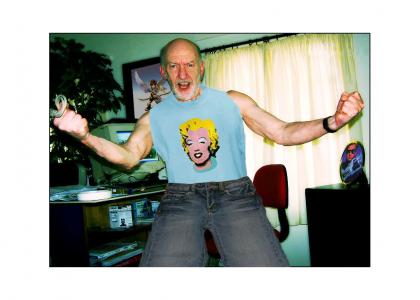I'm going to counter this every day until you stop.
Created on: January 10th, 2008

every day
Sponsorships:
| user | amount | user | amount |
|---|---|---|---|
| No one has sponsored this site ( ._.) | |||
| Sponsor this site! | Total: $0.00 | Active: $0.00 | |
Vote metrics:
| rating | total votes | favorites | comments |
|---|---|---|---|
| (3.85) | 202 | 8 | 73 |
View metrics:
| today | yesterday | this week | this month | all time |
|---|---|---|---|---|
| 0 | 0 | 0 | 0 | 9,120 |
Inbound links:
| views | url |
|---|---|
| 45 | https://www.bing.com |
| 8 | http://www.google.com.hk |
| 2 | http://www.youtube.com/watch?v=-LuxPTjshlc |
| 2 | http://216.18.188.175:80 |
| 2 | http://thehole.ru/ |
Laser cooling is a technique that uses light to cool atoms to a very low temperature. It was simultaneously proposed by Wineland and Dehmelt and by Theodor W. H�nsch and Arthur Leonard Schawlow in 1975, and first demonstrated by Letokhov, Minogin and Pavlik in 1976. One conceptually simple form of laser cooling is referred to as optical molasses, since the dissipative optical force resembles the viscous drag on a body moving through molasses. Steven Chu, Claude Cohen-Tannoudji and William D. Phillips were a
This technique works by tuning the frequency of light slightly below an electronic transition in the atom. Because the light is detuned to the "red" (i.e. at lower frequency) of the transition, the atoms will absorb more photons if they move towards the light source, due to the Doppler effect. Thus if one applies light from two opposite directions, the atoms will always scatter more photons from the laser beam pointing opposite to their direction of motion. In each scattering event the atom loses a momentum
equal to the momentum of the photon. If the atom, which is now in the excited state, emits a photon spontaneously, it will be kicked by the same amount of momentum but in a random direction. The result of the absorption and emission process is to reduce the speed of the atom, provided its initial speed is larger than the recoil velocity from scattering a single photon. If the absorption and emission are repeated many times, the mean velocity, and therefore the kinetic energy of the atom will be reduced. Sin
ce the temperature of an ensemble of atoms is a measure of the random internal kinetic energy, this is equivalent to cooling the atoms. In other forms of laser cooling, the laser light is similarly tuned to a frequency with an energy just below the energy of an electronic transition, but the type of transition is not necessarily restricted to a simple atomic transition. In these cases, the heat extraction occurs because the thermal energy of the material makes up the energy difference between the laser
Bold
Italic
Underline
Code
User Link
Site Link